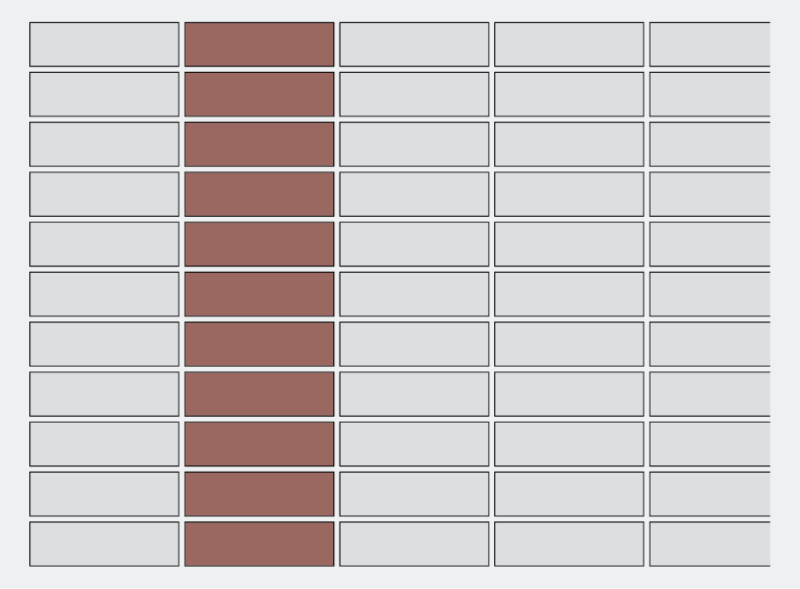The brick bonds illustrated below represent the most common masonry coursing. From these bonds, an infinite number of bonds and patterns can be developed.
This article references headers and stretchers, which are typical brick orientations. You can read more about the various brick orientations in our Brick Sizes, Shapes, and Grades article.
Running Bond
The running bond is the most used bond and is composed of stretchers offset by 1/2 brick per course. It is often used in cavity wall construction reinforced with metal ties back to the main structural wall.
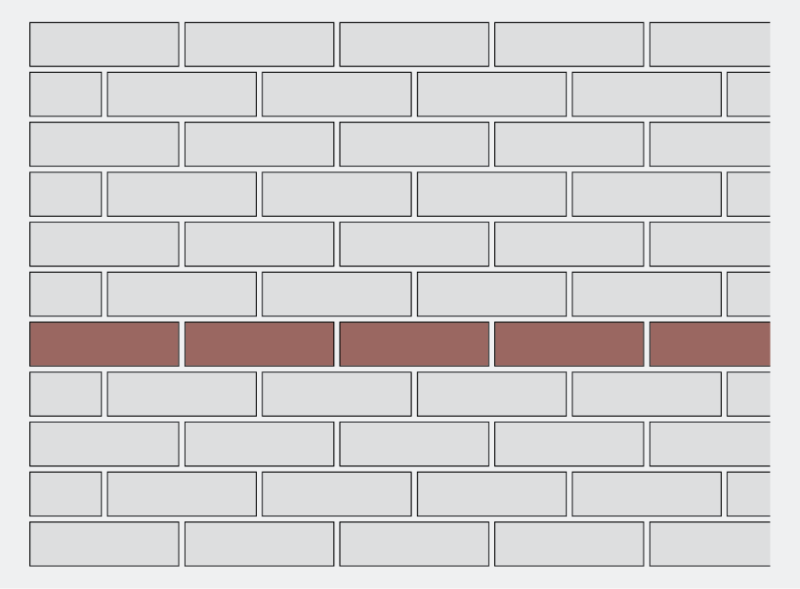
A variation on the running bond is the 1/3 Running Bond, which is also composed of all stretchers, but the stretcher are offset by 1/3 or a brick. This is depicted below.

Common or American Bond
A common bond, also referred to as the American bond, has a course of headers inserted every five or six courses. A header is always centered on a stretcher and the joints of each course of headers always align.
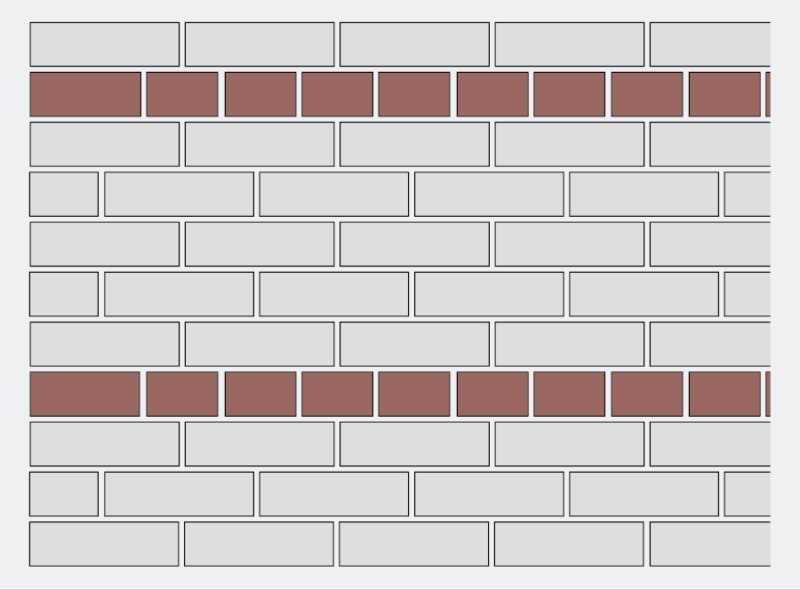
English Bond
The English bond is built with alternating courses of stretchers and headers where a header is centered above a stretcher. The joints of the stretcher courses align and the joints of the header courses align.
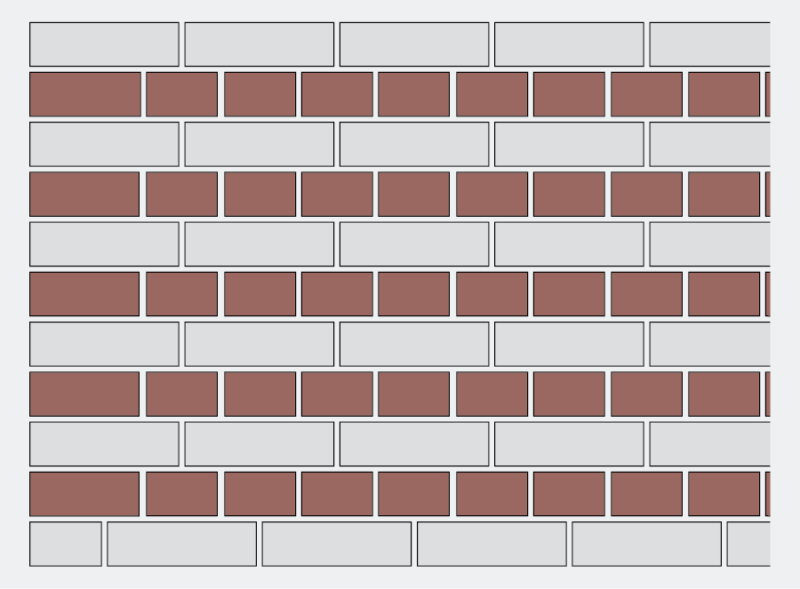
Flemish Bond
For the Flemish bond, each course is made up of alternating stretchers and headers. Each header is centered on a stretcher above and below.
The pattern can be varied by including multiple stretchers between each header within the course, which then changes the name to a Garden Wall bond.
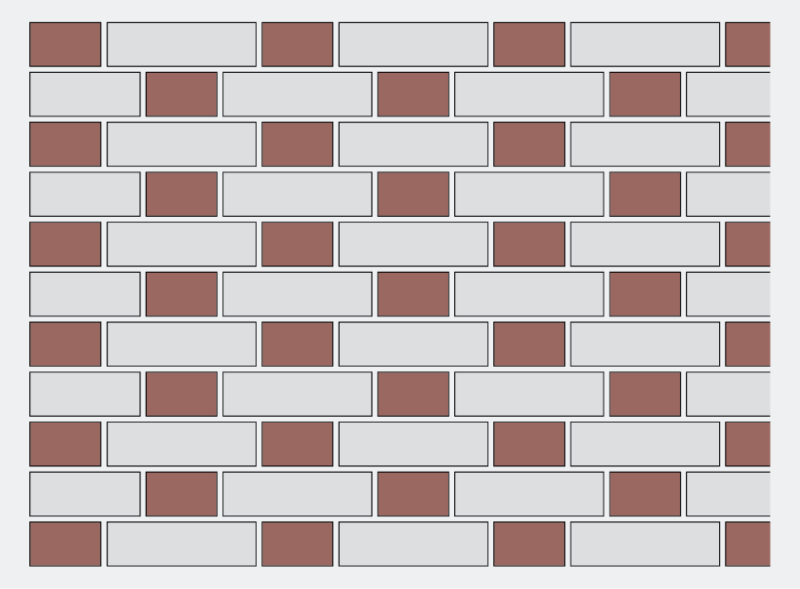
Stack Bond
The stack bond is made up of courses of stretchers where each stretcher is stacked directly above a stretcher and the joints align. This is not a structural bond and is generally used on interiors for non-load bearing walls.
